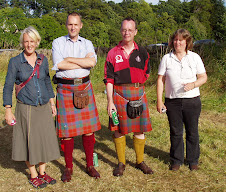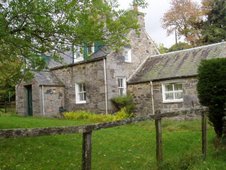Here we
are, the Week of November 13. Nor is the week's menu plan complete. Blogging may be patchy, but I should be here
tomorrow at least. Today is the Man from the Tate (an old acquaintance). My husband is edgy.
Knitting
continues to soothe and progress. I have cast on the body of the little
Brownstone. Today’s television-time will have to be devoted mostly to winding
the next skein. I will surely have enough (two more skeins) of this peculiar
un-plyed madelinetosh “merino DK” to finish the body.
Thanks for
the comments on Norbury. (Liz Lovick herself left one, next to my comment on
her blog post. It’s nice the way a blog-author can do that in Wordpress.) I
share the general doubt about historic authenticity. Maybe it was just one
grandmother, talking about the practice in her own family. Norbury may have
transported her, so to speak, to Fair Isle
itself.
But my
point was not authenticity, but to offer Norbury as the source of subsequent
references to the “well-known practice”. My pursuit of the origin of “Kitchener
But when
did he say it? Where?
Some years
ago an intelligent author offered the plausible hypothesis that Ruskin’s
marital difficulties – look it up – stemmed from the fact that he didn’t know
until his wedding night that women had pubic hair. This idea – it may be true,
but again that’s not the point – instantly became an “everybody knows”, repeated by
journalists.
As for the
patterns themselves, they could indeed be easily recovered from the pram
blankets, as you say, Tamar. You young 'un’s simply cannot imagine how few
charts for colour knitting were available in the 60’s. There are some in
Odham’s Encyclopedia, mentioned yesterday, and Mary Thomas’ Knitting Book has
the Crown of Glory and the Tree of Life, and that was about it.
I was
interested to note that the crown pattern on the pram blanket Liz illustrates is not quite the
same as the one Odham’s and Mary Thomas provide. There are five thingummies
sticking up from the base of the crown – I am sure there is a proper technical
name for them, but I don’t know it. In Odham’s and Mary Thomas, the middle one
is higher than the others. On the pram blanket, they’re all the same.
Mary Lou –
forgive the lack of link; I’m now in a hurry – I can remember taking Odham’s
Encyclopaedia out of the library again and again when we were in Leicester in
the late 60’s; can’t remember when I acquired it. But I’ve just tried Abebooks,
and there it is, pretty cheap. Go for it, I’d say. Norbury and Agutter, that’s
the one you want.



Yes, I doubt the authenticity too - I rather suspect that our item was "just a pram cover". I asked the cousin I thought had inherited it whether she knew any more. It turned out to be another cousin, sadly no longer alive. Her daughter remembers it ended up as a blanket for the cat basket! She said she remembers it as "just a sort of fair isle thing made up from bits and pieces". I wonder if they were fairly common but really just blankets made from leftovers?
ReplyDeleteJean, your wit always delights. (In my part of the world, we'd call you "lively" in a fond sort of way.) Thank you for the history.
ReplyDeleteThere is also the peculiar sequence: in Australia, the toe was known as the Kitchener toe a year or so before the earliest date we've found the pattern and requirements in North America, and the earliest North American mentions refer to the Kitchener _heel_ and the Queen Mary toe. I can see the whole thing being ascribed to Kitchener simply because he was in charge of getting the kit together for the armies, but I wonder about the differences per continent. The three-needle bind-off was a problem under the heel in the coarser sock yarns being used, so an already-known European (Dutch?) heel was required; maybe it was renamed out of nationalistic feeling. Then grafted toes, also already known, were recommended, perhaps by Queen Mary, who did organize some production, and were again named after the organizer.
ReplyDeleteAbout the crowns - it's easy to draw a pattern or chart that has the middle point sticking up higher, but when you're knitting it, that last pointy tip means stranding yarn a long way across the back. It's easier and more frugal to make the points all the same height. Have we seen the original magazine article pattern yet? I wonder whether that had the central point higher.
ReplyDelete